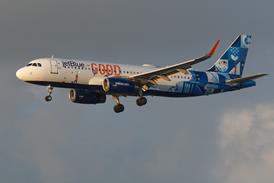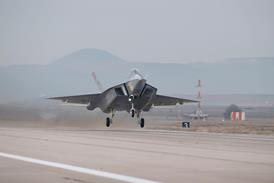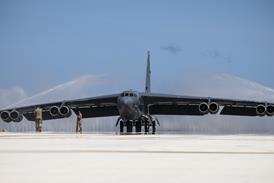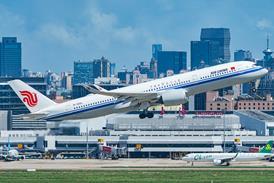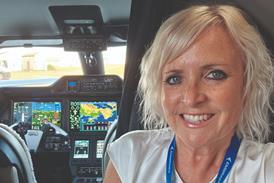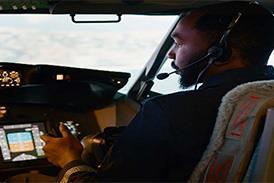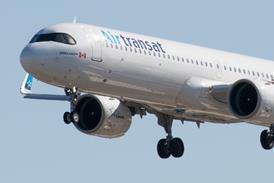PAUL LEWIS / WASHINGTON DC
Boeing Phantom Works modifies design and opts for steel after problems are highlighted
Boeing Phantom Works is having to make material changes to the swashplate on the X-50A Canard Rotor Wing (CRW) demonstrator after discovering high cyclic loads during ground tests. This will mean a delay to the start of flight testing until the end of the year.
The CRW is a vertical take-off and landing concept aimed to combine the hover efficiency of a helicopter with the cruise speed of a fixed-wing aircraft.
"During ground checks we discovered high cyclic loads in the collective mode. We are modifying the design of the swashplate and changing hardware from aluminium to steel for additional stiffness. There will be a weight gain of about 20lb [9kg], but there is plenty of performance margin," says Clark Mitchell, Boeing Phantom Works CRW programme manager.
A differential deflection of around 0.85µm (3 x 10-5in) between the supported and unsupported areas of the swashplate was found during static ground runs and the reaction drive rotor/wing rotating at 100%, or 1,170rpm. Collective input was being applied and the rotor/wing had reached 12° out of a maximum 17° of pitch, when instrumentation showed that the pitch link load was starting to approach the design limit.
The X-50A demonstrator was undergoing static and dynamics system testing anchored over a hover pit in readiness for a scheduled first flight this quarter. Boeing is now aiming for US Defense Advanced Research Projects Agency and flight certification board approval for a first flight at the Yuma proving ground, Arizona, in December. Flight tests will be extended to early 2003, but Boeing still hopes to make a full conversion from rotary to fixed-wing mode by the tenth or eleventh flight.
Boeing has reverted to hydro-mechanical fuel control after the electronic controller was found to be insufficiently responsive. Mitchell says that a quick throttle response is needed to control RPM and that the original controller suffered excessive delay. The X-50A is intended to prove the feasibility of stopping and starting a rotor in flight.

Source: Flight International



